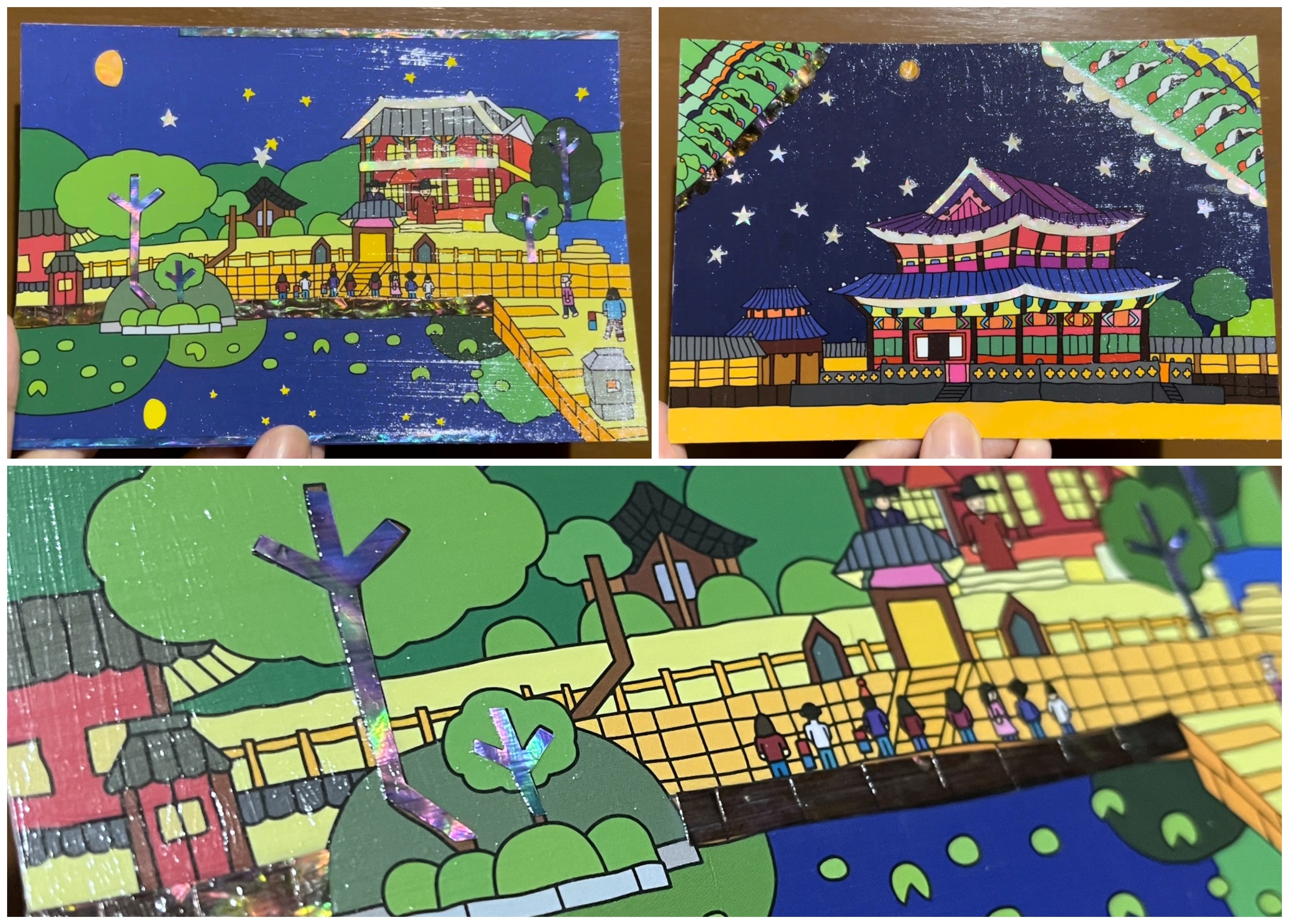- 한국어
- English
- 日本語
- 中文
- العربية
- Español
- Français
- Deutsch
- Pусский
- Tiếng Việt
- Indonesian
By Honorary Reporters Myrtle Iris Villaraza from Philippines and Monthi Rosselini from Indonesia
Goongon is a project run by the Korea Cultural Heritage Foundation to develop and promote Korean heritage content in online videos and kits for people outside Korea.
During December 2022, the foundation sent to 120 Honorary Reporters two kinds of kits: "Moonlight Tour" and "Saenggwabang (Tea room)." The text below are reviews of each set in the words of two Honorary Reporters.
Moonlight Tour (Myrtle Iris Villaraza)
On Jan. 4, I received the Moonlight Tour kit featuring a virtual tour of a Korean gung (palace) with a QR code to a video containing a beautiful nighttime view of Changdoekgung Palace, which reminds me of sageuk (Korean historical dramas).

This screenshot is from the "Moonlight Tour" video. (Korea Cultural Heritage Foundation)
It also comes with crafting materials for making postcards decorated with najeon (mother-of-pearl) and a 2023 calendar featuring designs alluding to the tour.
The postcards and calendar feature illustrations by autistic designers reinterpreting scenes of the tour. In addition to the charming and colorful drawings, I give kudos to the foundation for letting people with autism showcase their talent through the project.

Making the postcard with najeon (mother-of-pearl) linings was fun. (Myrtle Iris Villaraza)
I worked on the postcards and affixed the mother-of-pearl linings to them. I realized the najeon pieces were delicate and could easily break, so I took extra care when handling them. This was my first time visiting Changdeokgung online and I eventually want to visit it in person to see its beauty both by day and at night.
Saenggwabang (Monthi Rosselini)
On the first day of 2023, I got the Saenggwabang kit with all the ingredients to make guseonwangdogo, or a rice cake with herbal medicine prepared for the royal family during the Joseon Dynasty.
The kit included rice flour, mixture of herbal medicine powder such as pine roots, lotus fruit and white magpie nuts, cinnamon, malt powder and lotus flower seeds. In addition, colorful garnishes made of dried orange and leaf-shaped maejakgwa (fried dough cookie) gave the dish more color and beauty.

This is the process of making guseonwangdogo, or rice cake made with herbal medicine that was served to the royal court of the Joseon Dynasty. The finished dish can be seen on the far lower-right corner. (Monthi Rosselini)
After I cooked it, I tasted it immediately. From the aroma and taste, I knew this was a healthy food with a soft texture and steamed cooking method that made it feel clean in my mouth, with its not-too-sweet taste suiting my tongue. I felt that the sweet dried orange garnish added to the enjoyment and balance of the overall taste.
I loved this opportunity to make a herbal health food served to the royal family in the Joseon era as an eye-opening and thoroughly enjoyable experience.
kalhong617@korea.kr
*This article is written by a Korea.net Honorary Reporter. Our group of Honorary Reporters are from all around the world, and they share with Korea.net their love and passion for all things Korean.
Most popular
- Slew of festivals, events scheduled in downtown Seoul in May
- Actor Tom Cruise proves 'love for Korea' with 12th visit
- Netflix releases official trailer for final season of 'Squid Game'
- Jeju Island completes prep to host series of APEC meetings
- Korea Day celebrated at Osaka-Kansai World Expo in Japan
